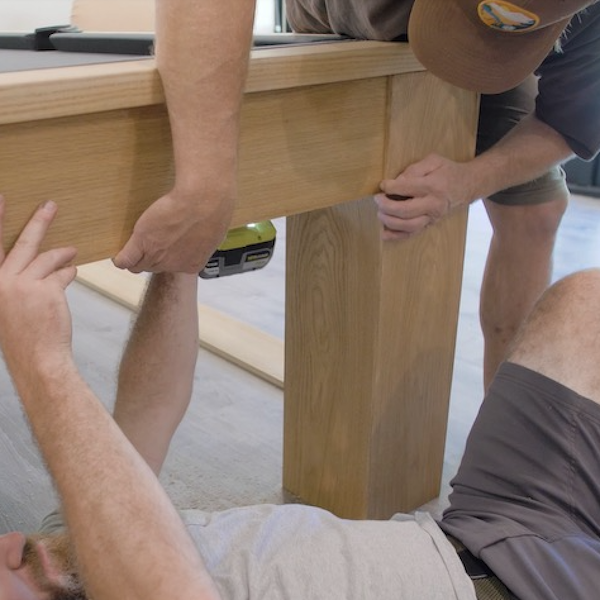Steps
STEP 1
Depending on your pool table the rails may come off in pieces or all as one like ours. Just remove the bolts from below to free the rails. Remove the felt, staples, and bolts by cutting with a utility knife and prying out the feather boards.
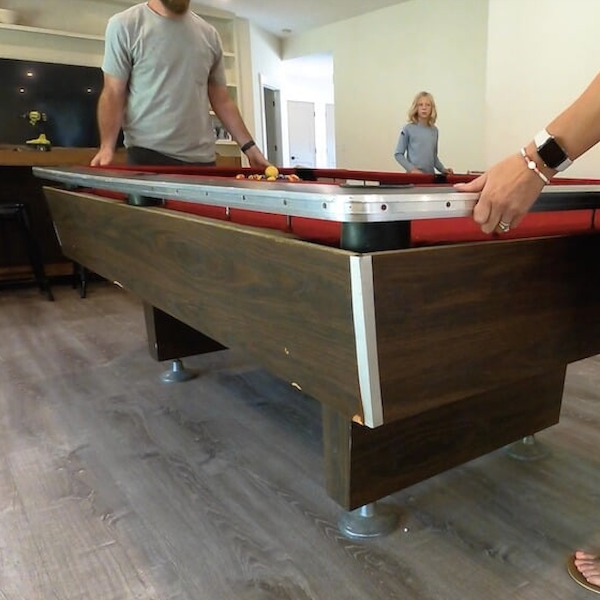
STEP 2
I used my old rails as a template by first measuring the angles and matching them to the cuts made on the new, red oak, 2×6 rails. I also cut a dado to match the old one which will be used to install the fabric to cover the bumpers.
Tools
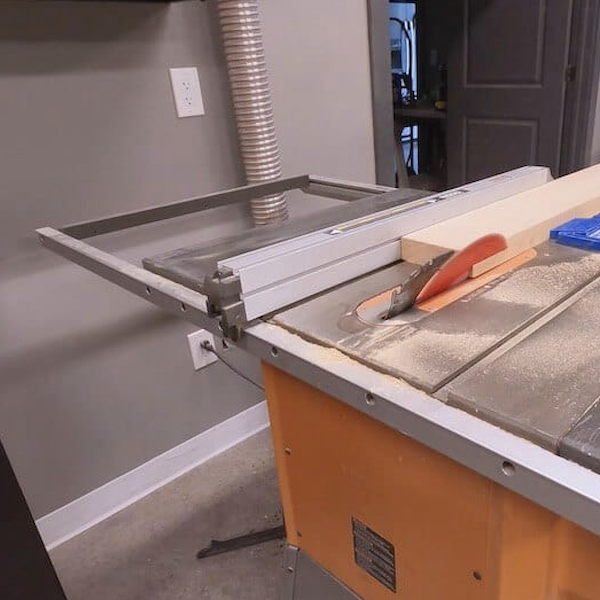
STEP 3
I then traced the pockets and rough cut them with a jigsaw. The pocket holes are cut on a slight angle to help accept the pockets.I finished the pocket holes by matching the compound angled cuts of the old rails on the miter saw.
Tools
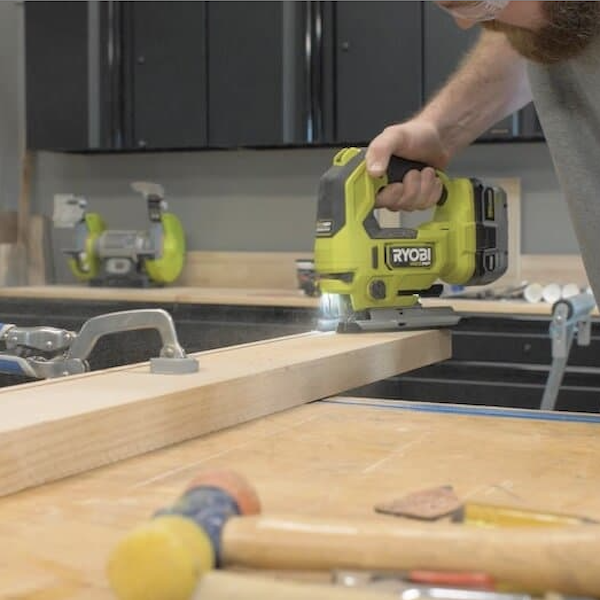
STEP 4
I cut the rails down to their final length based on the old rails as a template and joined them together by gluing and clamping the rails and securing with 1-1/4″ hardwood pocket screws. I then filled in any imperfections with wood putty.
Tools
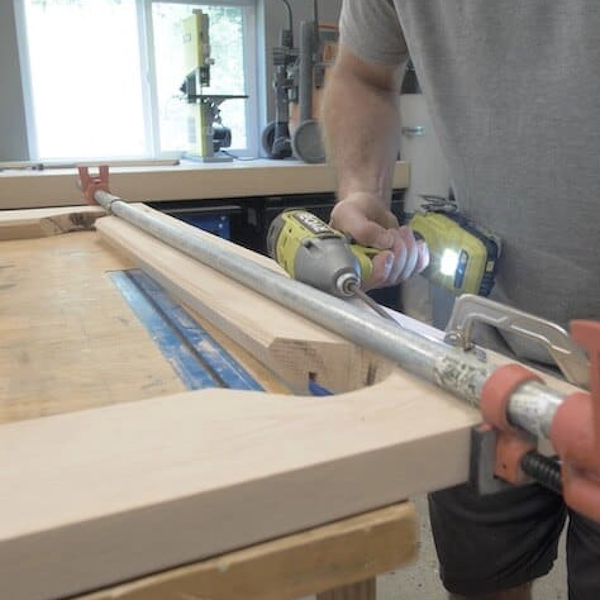
STEP 5
I first removed the existing skirting to make things a little easier. I then located the rails on the table and marked the hanger bolt locations. Using an appropriate sized drill bit, I predrilled the hanger bolt locations.
Tools
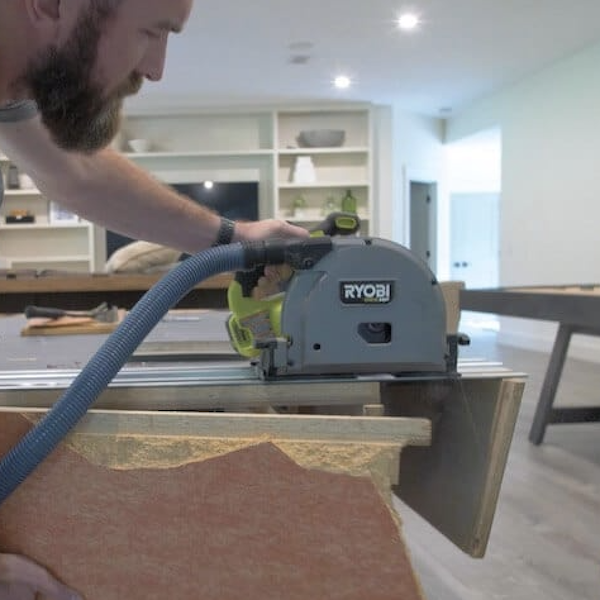
STEP 6
I installed the hanger bolts by cinching two nuts together and screwing the course threaded end into the rails with a socket.
Tools
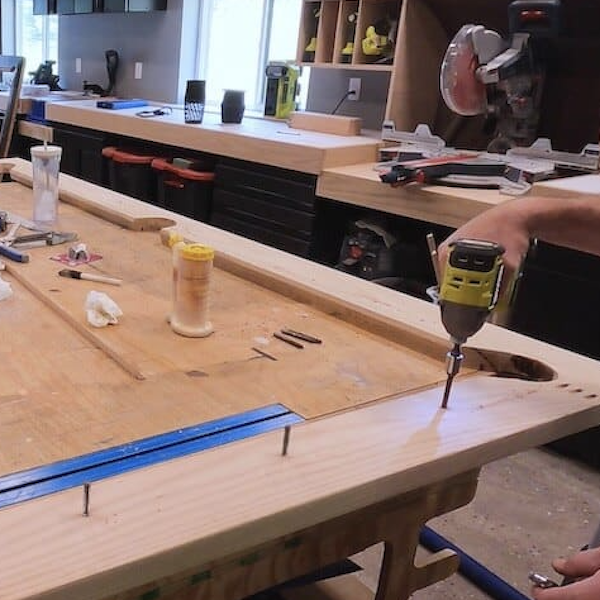
STEP 7
For the legs we wanted to bring them out to the corners. The problem was that this is where the pockets are. So I decided to build 8 inch boxes out of plywood. The boards were all mitered on a 45 and glued together with wood glue.
Tools
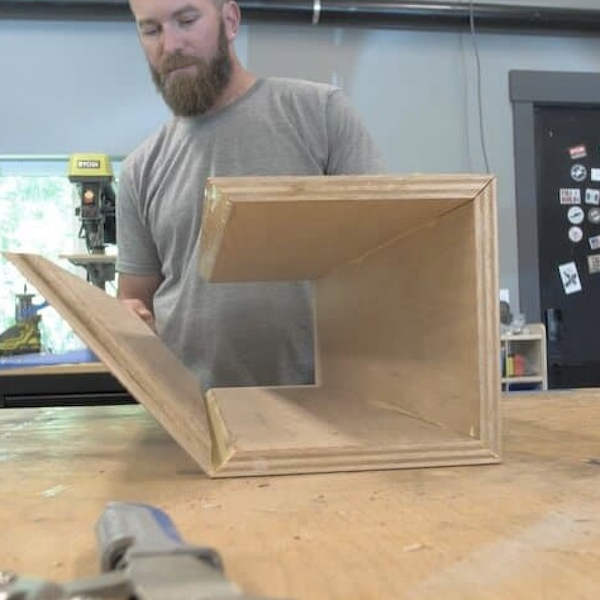
STEP 8
I laid down two strips of painters tape and placed the boards on that to help hold the miters. Then finished off the joints with a pin nailer.
Tools
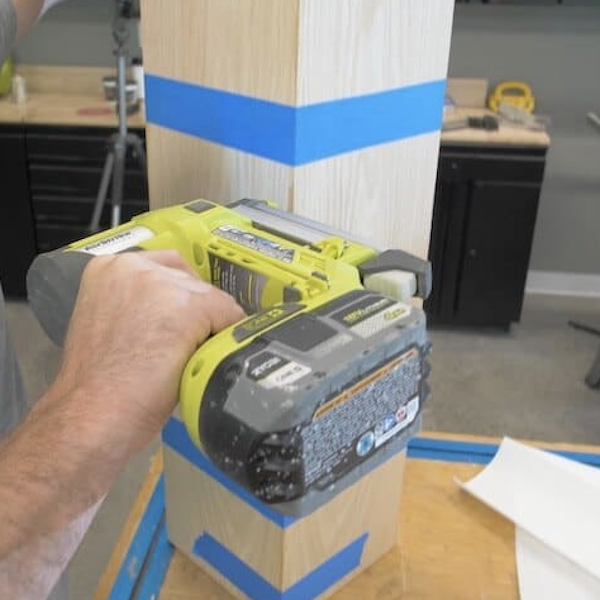
STEP 9
Wipe the wood with peroxide and then apply a lye mixture. The mixture is 3 teaspoons of lye in 1 quart of water. After it drys, wipe it with clean water to remove any residue and apply a wipe on polyurethane for protection.
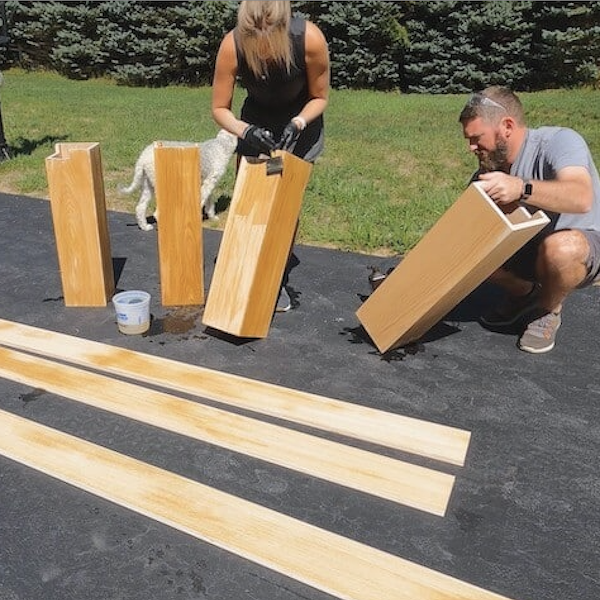
STEP 10
For a permanent bond, I installed the cushions with Contact Cement. This is applied to both the cushion, and the rail where it mounts, and allowed to cure until both pieces were tacky. I was able to salvage the old cushions.
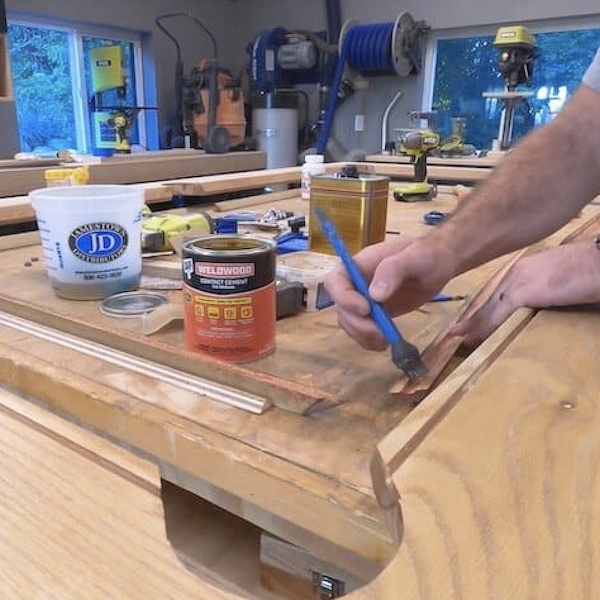
STEP 11
The bumpers were also installed with contact cement. They are kind of like rubber end caps for the cushions and recess into the pocket. Once bonded we trimmed with a utility knife and eased the edges with a rotary tool.
Tools
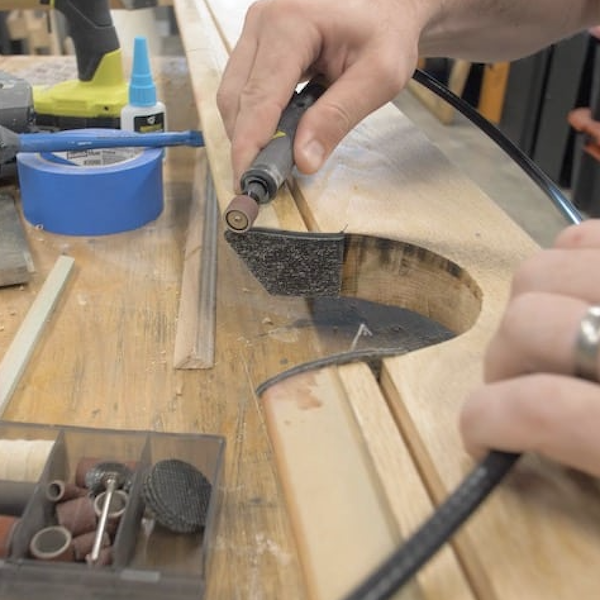
STEP 12
Sights are the dots on the side of the pool table that help you line up your shot. The old sights were a pearl inlay that I didn’t think would go well with the new style of the table so I opted to cut discs out of 1/2″ brass rod.
Tools
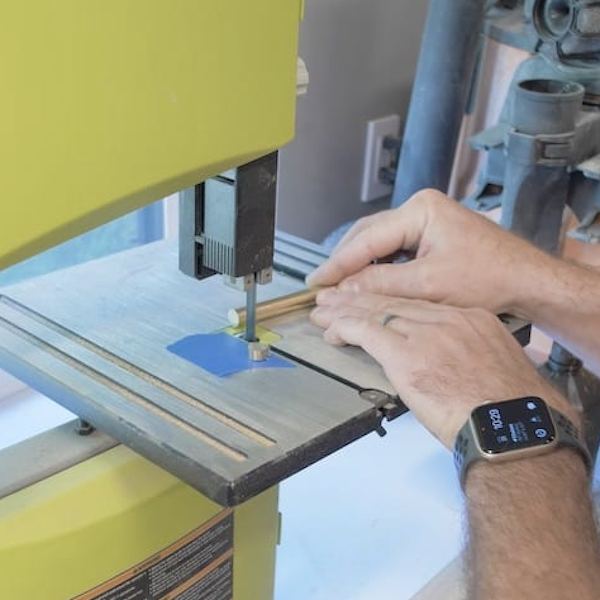
STEP 13
I then sanded them down, marked the locations based on the old rails and used a 1/2″ forstner bit to drill a hole the same depth as the discs. I checked the depth by placing the discs and removing with a piece of tape before adhering.
Tools
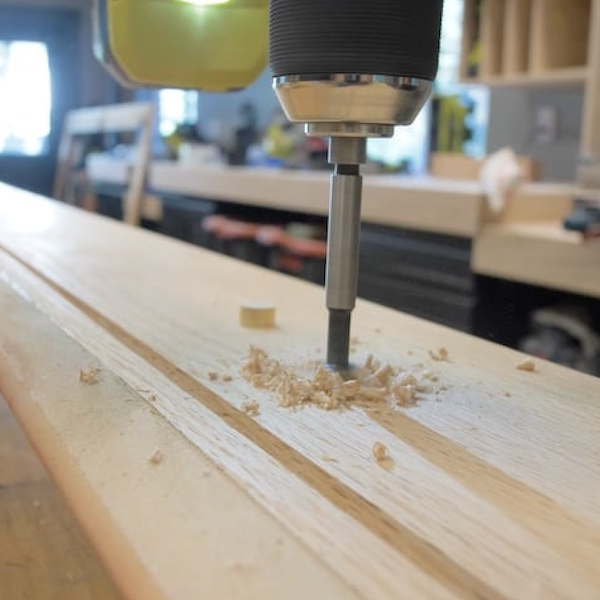
STEP 14
The discs then get bonded into place using adhesive.
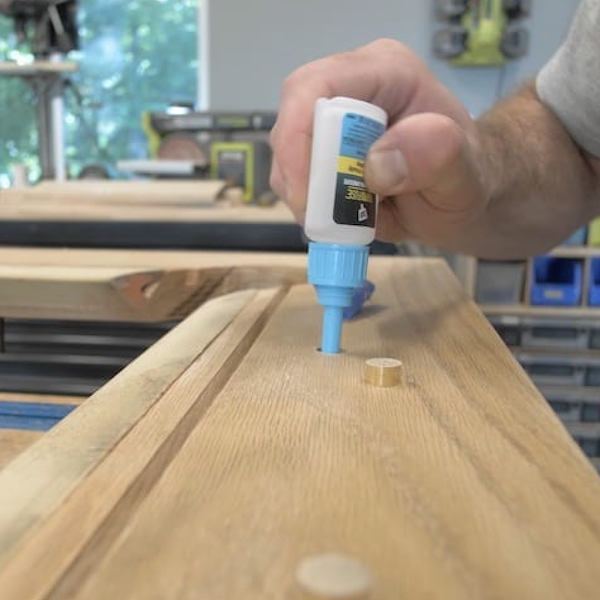
STEP 15
Install the felt on the table. Staple the middle of one end and stretching both sides toward the pockets. I then did the same at the other end and got the felt nice in tight, lengthwise. Make sure to staple every 3/4″ or so and pull evenly.
Tools
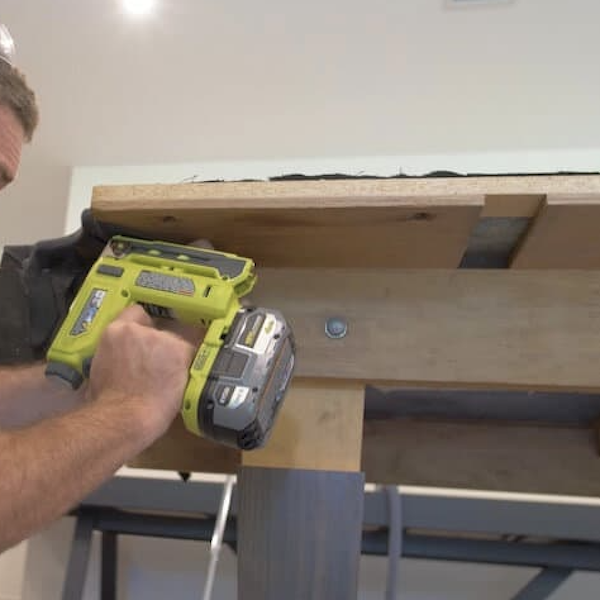
STEP 16
After trimming the felt I cut 3 slits in each pocket and pulled tight and stapled below. This part of the recovering process wasn’t hard.
Tools
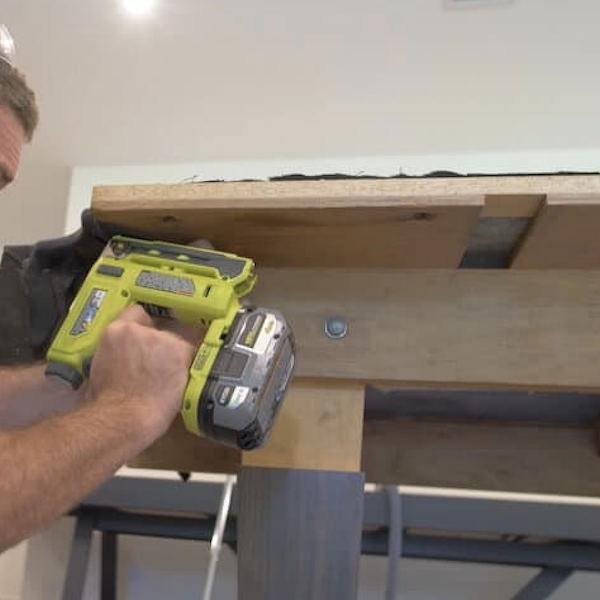
STEP 17
Then it was on to the rails. I highly recommend watching as much content on this process before beginning. I started by laying the fabric upside down and hammering the featherboard into the dado to secure the felt to the top of the rail.
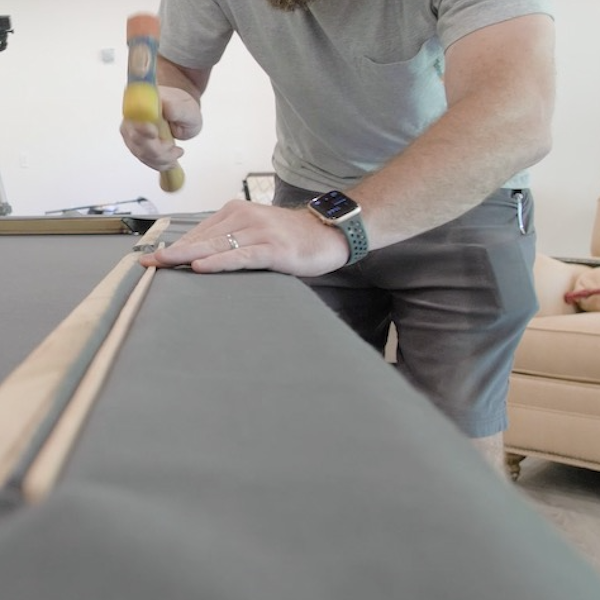
STEP 18
After pulling the felt tight and stapling back to the middle, I moved on to the corner pockets which just get stretched around the corner and stapled tight. Then finish out the rail back to the middle, stapling about 3/4″ apart and trimming the excess.
Tools
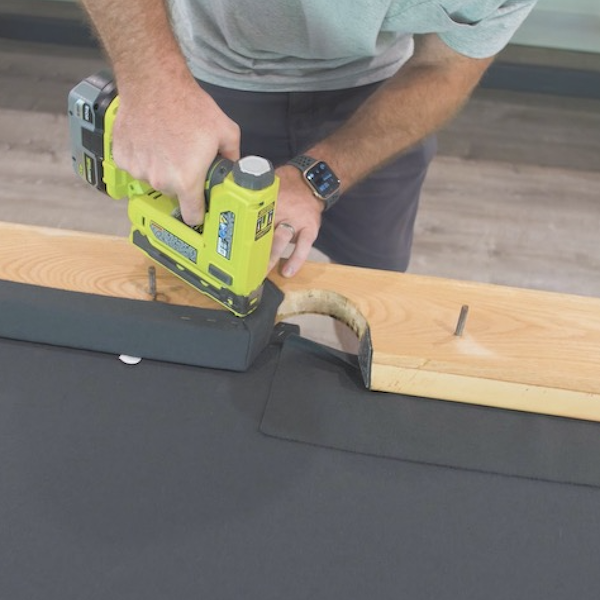
STEP 19
Flip the rails back over and insert the hanger bolts into the holes on the table.
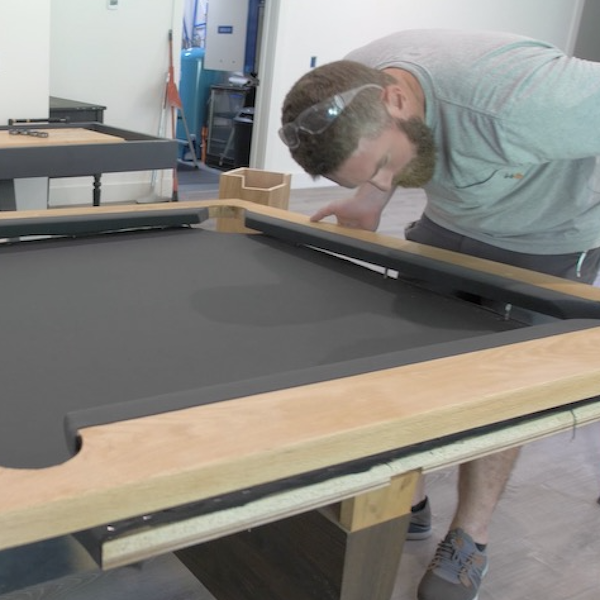
STEP 20
Secure the rails from below with washers, nuts and socket wrench.
Tools
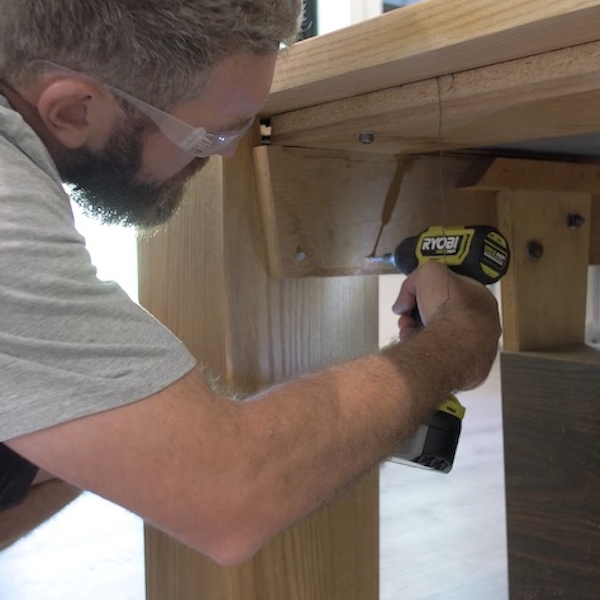
STEP 21
I first placed the legs at the outside corners of the table such that the pockets would recess into them. Then I secured the beams to the legs with wood screws temporarily. We then unbolted and removed the old legs from the table.
Tools
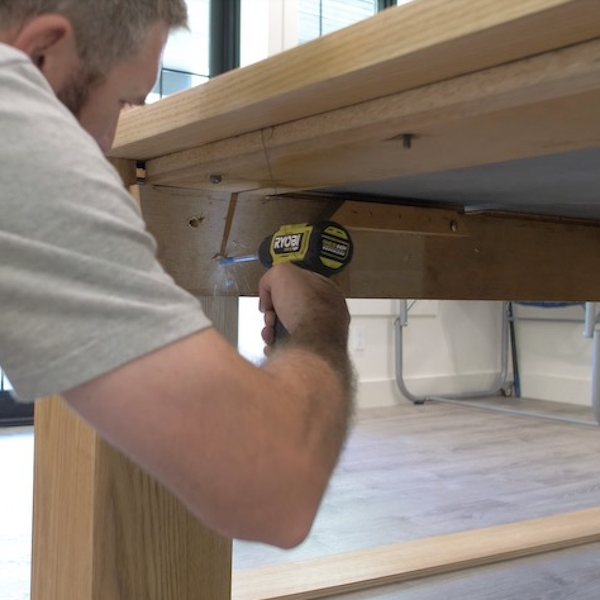
STEP 22
Using a drill I drilled holes for through the beam and into the new legs. Then, using the old bolts I secured the beams to the new legs.
Tools
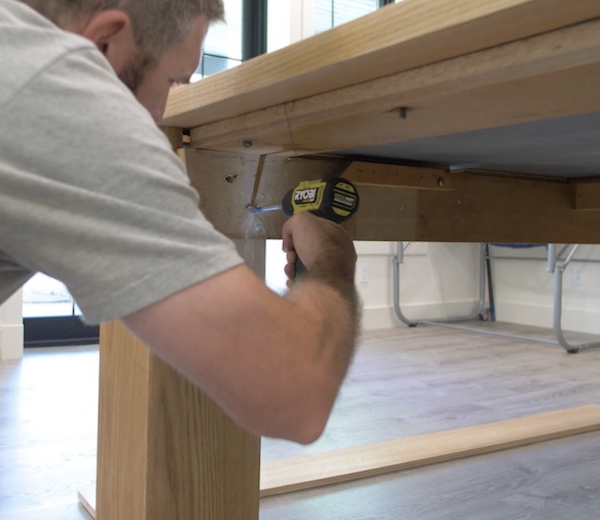
STEP 23
The final pieces of the table were the aprons. These were ripped to 6-1/2″ which is enough to cover the side pockets and secured with four 1-1/4″ pocket screws at each end and 90 degree clips in the middle.
